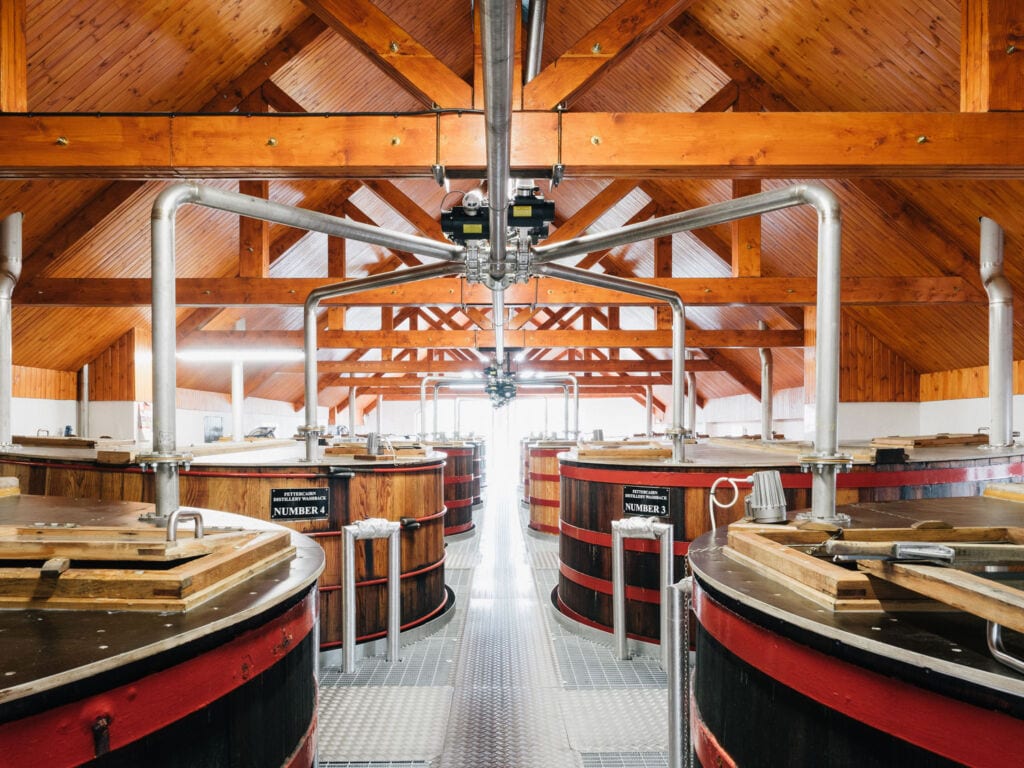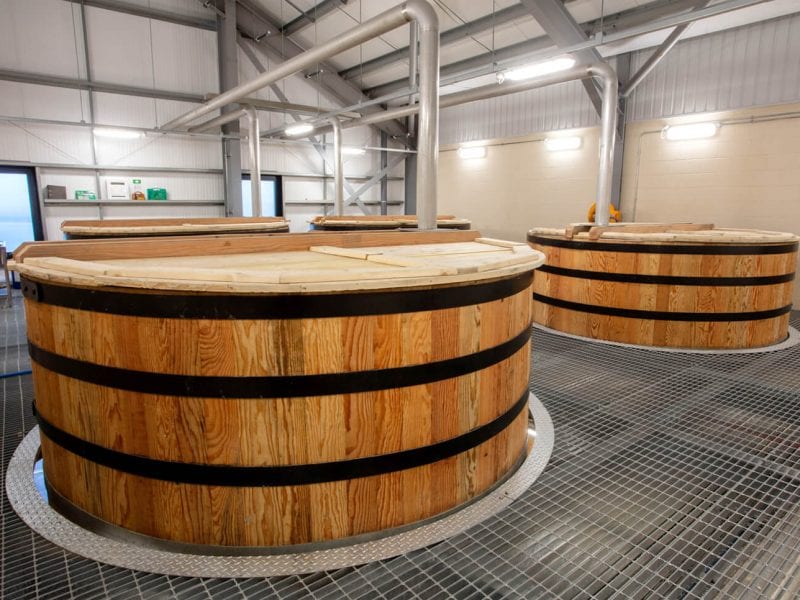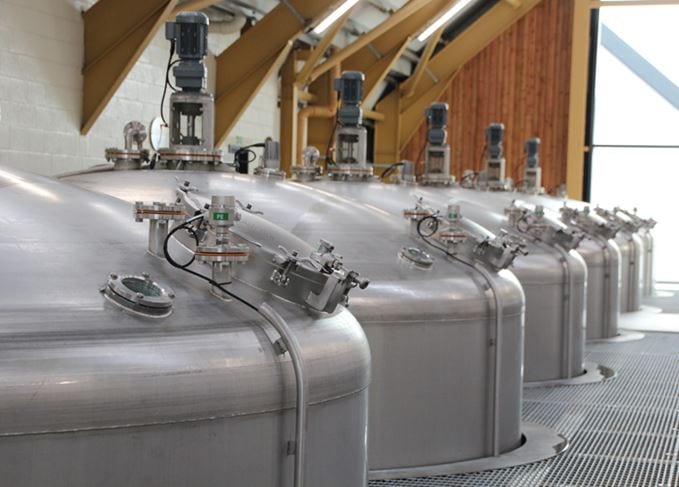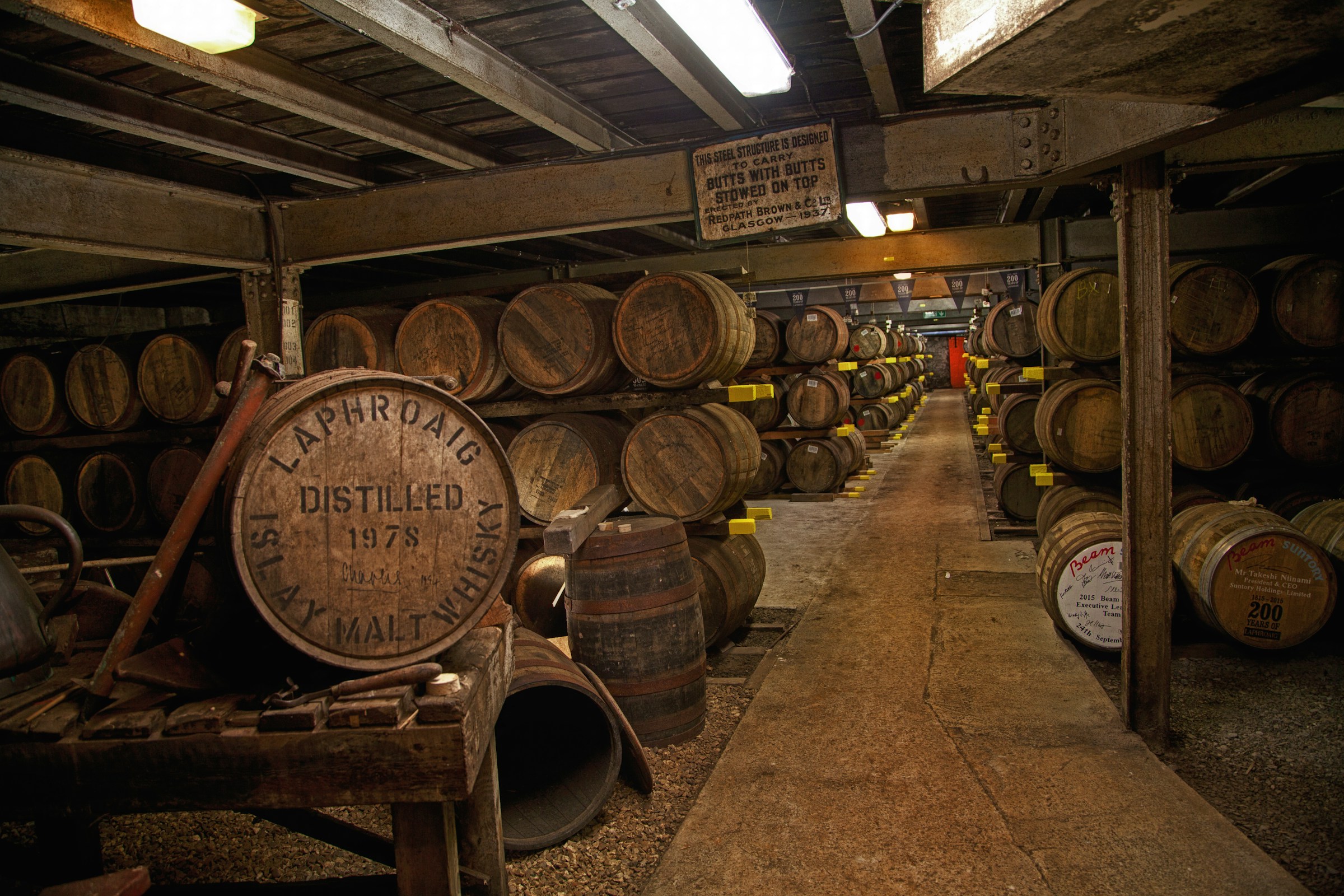The washback is the vessel in which fermentation will take place. Once the wort leaves the mash tun, it’s collected in the worts receiver (also called underback). From there, it will be cooled down, and then find it’s way into the washbacks.
Washbacks are typically gigantic structures, able to host thousands of litres of liquid.
When the liquids enter the washback, the temperature will typically be around between 20° Celcius and 34 °(68 – 39.2 ° Fahrenheit). The yeast would die at temperatures over 35°Celcius (95° Fahrenheit), hence the cooling process.
The washback is filled with wort up to about 2/3rds of it’s cap[acity. The yeast is then added, and starts convertiong the sugars of the wort into alcohol. Never to waste an opportunity, the yeast will convert any remaining starch in the wort into sugar.
A typical wash cyclwe will last between 2 to 4 days. Any shorter, would prevent valuable flavours and alcohol to be generated. If it would be left too long, bacteria that would turn the result acidic could end up being introduced.

When the yeast is first introduced, nothing much seems to happen. However, once the yeast is activated, it will generate lots of energy (and carbon dioxide), to the extent it can end up rattling the entire washback while the yeast performs its’ magic.
A lot of carbon dioxide is created during this stage, and the foam generated during the process could easily overlfow the washback. To prevent this from happening, some distilleries implement a device called a switcher blade (rotating blades), which will remove the generated foam.
There are different materials washbacks are made of.
Wooden washbacks
Originally made from European larch, but nowadays more likely from Douglar fir, Cyprus or from Oregon pine. These wood types are used because they lack knots, and have a tight grain, meaning they can easily be turned into huge planks. Wooden washbacks also just look fantastic!

The downside to using wood is that bacteria tend to grow in the pores of the wood, thus requiring more thorough cleaning. However, some distillers swear by wood, claiming it adds additional flavors.
Cast Iron washbacks
During the 19th and 20th century, distillieries looked for alternatives to the wood, primarily due to the additional cleaning, but also because wood has a limited lifespan. Their solution at the time was to use cast iron. Washbacks made of cast iron are increasingly rare, though.
Stainless Steel washbacks
With the invention of stainless steel in the early days of the 20th century, distilleries decided to switch to washbacks made of stainless steel. It has the same benefits as cast steel in that it is easier to clean, and they can be sealed, in order to keep out unwanted bacteria or other polutants.

